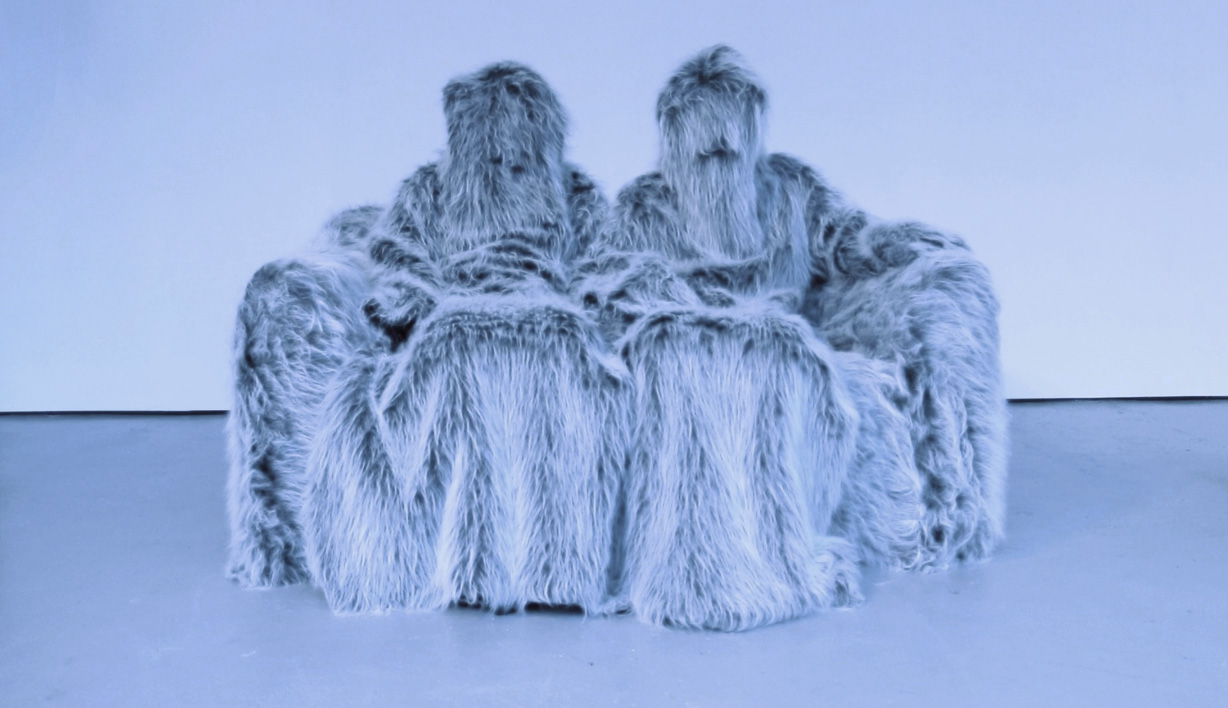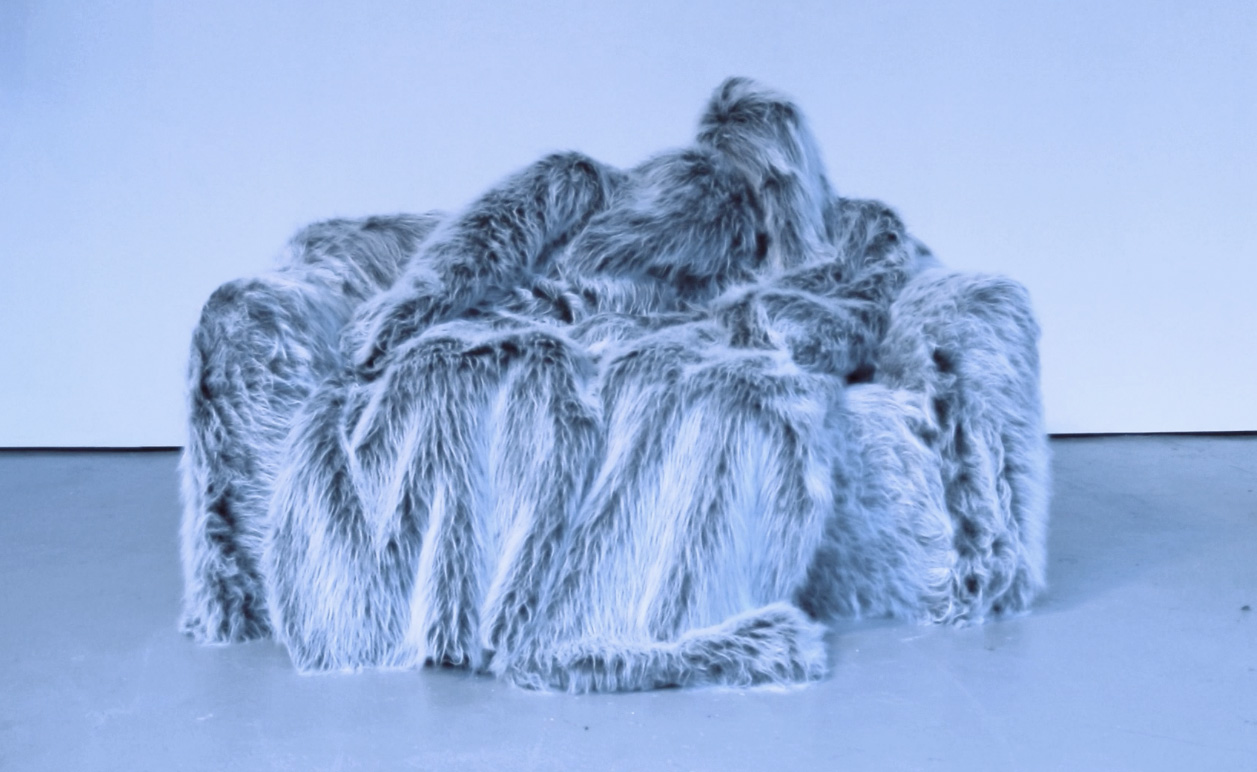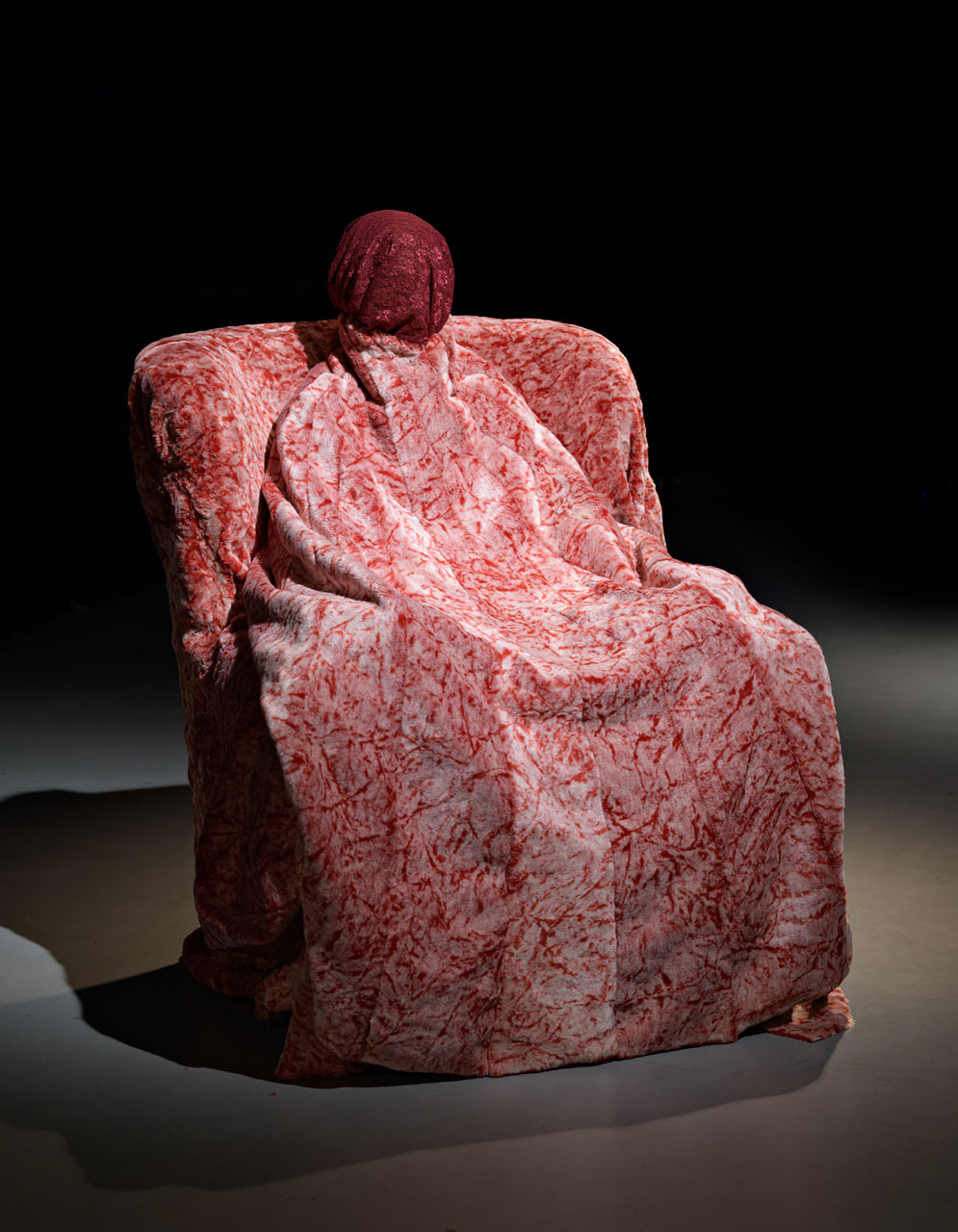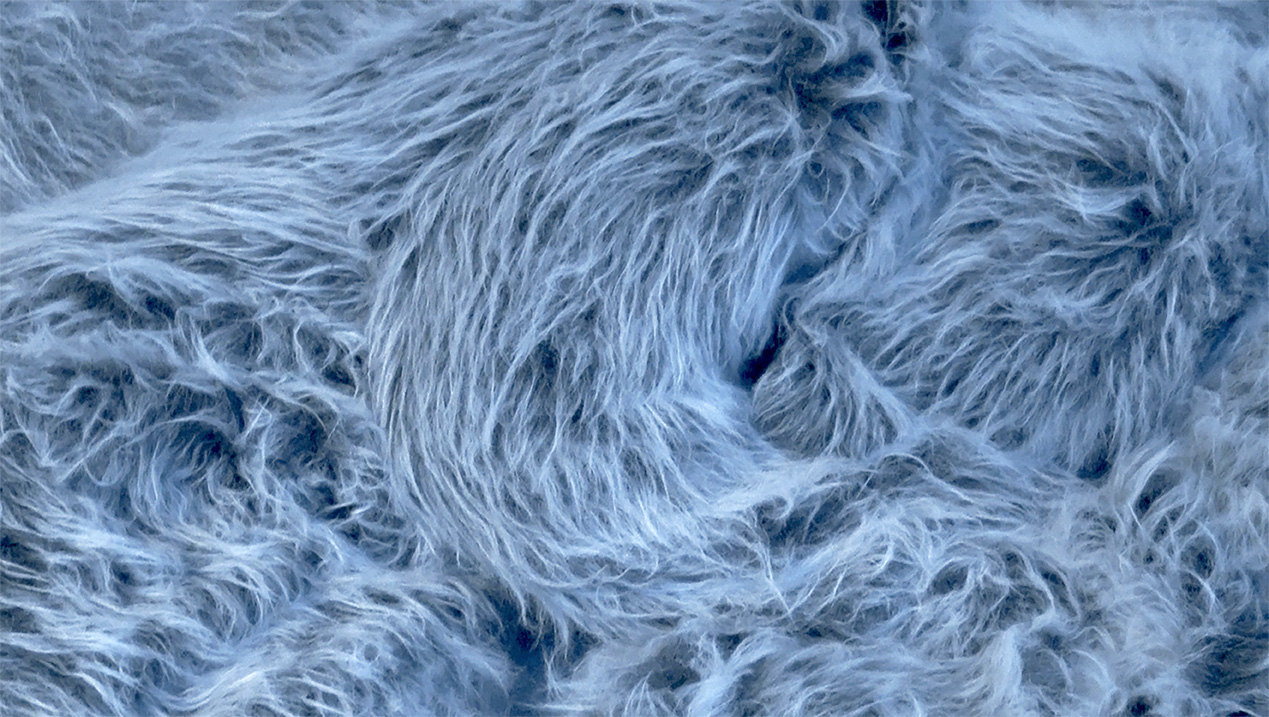Last year, Marieke Peeters won the Piket Art Prize in the Painting category. The jury was impressed with her immersive installations and the way in which she enters a still uncharted territory between visual art and theatre. “People react to my work in a very extreme way,” Marieke says. “I find that fascinating.”
Dark imagination
Did the prize make a difference? Marieke doesn’t have to think about it: “Yes, a big difference. The prize, as it were, says ‘you’re allowed to do this’. All of a sudden, all kinds of possibilities arise. Thanks to the prize I now have an accountant. It’s a kind of professionalization; taking your own work more seriously.” She also wanted to know more about working with fabrics and started to take sewing lessons. And she is thinking about a residence in Japan. “Residences offer a different context, which makes you see your work from a different perspective. I’d like to go to Japan to do research on the presence of folklore and imagination within its culture, by learning more about yōkai, for instance. Yōkai are the supernatural beings and spirits of Japanese folklore and they’re still very much part of present-day culture. Japanese pop culture shows a pretty dark side of the supernatural. I have this idea that Japanese imagination is more open to the dark side of existence and that this may be relevant to my work. I find this attitude reassuring. Here we tend to push aside the shadows; we focus on being happy, on the icing. I think it’s better to create a space for darkness and to try to find ways to reflect on it and handle it.” As for her immediate plans for the future, Marieke explains she is very busy with her studies. A year after her bachelor Fine Arts at the ArtEZ University of the Arts in Arnhem, she embarked on a master Artistic Research at the Royal Academy of Art in The Hague, which she hopes to complete within the next few months.
Not a ‘gallery artist’
The Piket jury was curious where Marieke would be able to situate her work. The jury report states: “Regarding the form she currently chooses, neither theatre nor art space presents an ideal situation.” Marieke has no difficulties agreeing with the jury’s opinion. “I haven’t found my place yet. It’s still very much trial and error. My work seems to fit neither ‘art’ nor theatre, which makes it hard to navigate. In addition, I know very few other artists who walk this path. It means that I myself have to take all kinds of decisions without having any idea how they will work out. I’m not a ‘gallery artist’, I can’t sell paintings. Many spaces don’t feel right for my work, make it seem out of place. A multidisciplinary approach works better.” As a former resident Marieke showed her work at the Door Foundation in Amsterdam last January. The Door Foundation is an organisation which, in an open and experimental manner, seeks to stimulate collaboration between theatre and performance, and other artistic forms of expression. “This radically different approach connects to my work,” Marieke says, “but I still have to explore what works and what doesn’t. On the other hand, because what I do is so very specific, opportunities present themselves.”
Working with others
Marieke works with a regular group of performers. “I prefer not to engage people I don’t know well,” she says. “Performing in my work is a very intensive experience and my performers must be genuinely interested in being part of it. I work with friends and relatives, most of whom have been collaborating with me from the beginning; they know what I’m looking for. There’s always someone working with me, which is great because we can share experiences. I also perform myself, which provides a different relation to my work. I often act as a guide to my installations, giving the visitors instructions before they enter and the opportunity to reflect when they come out again.”
Film as a source of inspiration
Marieke is very much aware of the fact that her work can be quite confronting. “Some people are just unable to see beyond its scariness. I understand and I don’t mind.” Her installations address the visitor at an immediate, irrational level. “They speak to your corporality, to your senses. They present a very direct, personal experience, and as a visitor you’re just thrown into it. People react to my work in a very extreme way. I find that fascinating, so it’s interesting for me to talk to visitors. It gives me a lot and helps me to develop my work.” For Marieke, film is an important medium to document her work and, as she calls it, to enter into a dialogue with it. In addition, film was a source of inspiration, especially the horror subgenres of gothic and body horror. “The way films are created appeals to me. Set design, costume design, practical effects. It’s one way of looking at my work; bringing a film to life. Perhaps it’s because, so often as I was watching a film, I actually wished I was in it. Film is also somehow immersive.” Nevertheless, she doesn’t see herself as a movie maker or video artist. “It’s a great medium and I often return to it, but I think the immersive installation will always be my medium. Its directness and the physical encounter between visitor and performer fascinate me endlessly.”
Photo: Hessel Waalewijn
Photo’s slideshow: Breathing Chair. Photograph: Pieter Kers, Beeld.nu
Fruits de MAR exhibition, NEST The Hague. Photo: Marieke Peeters





